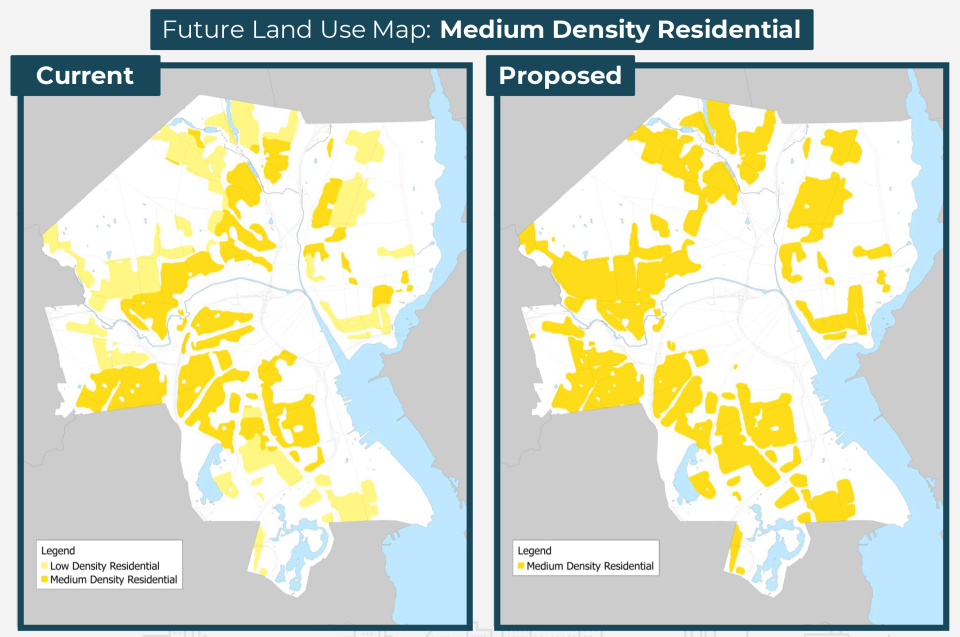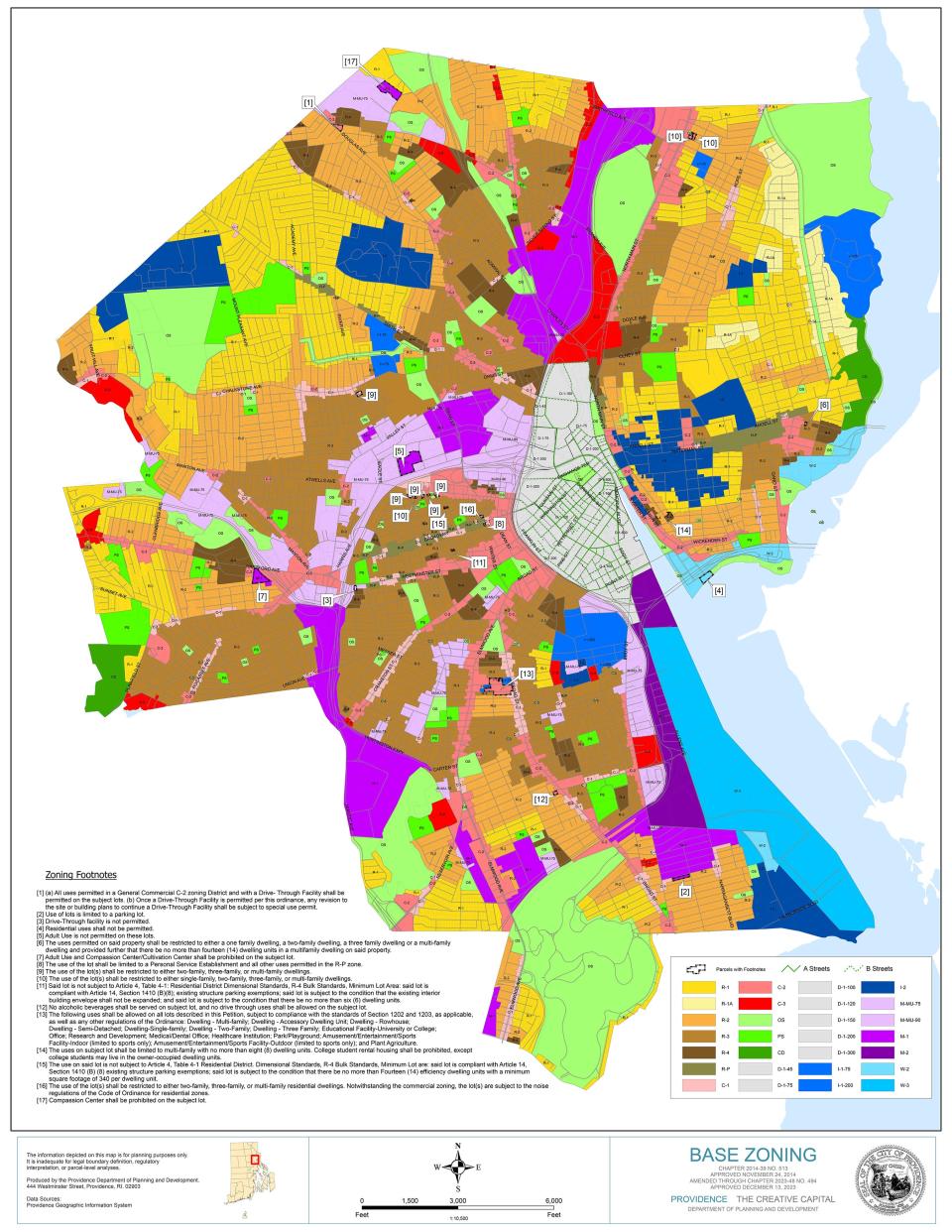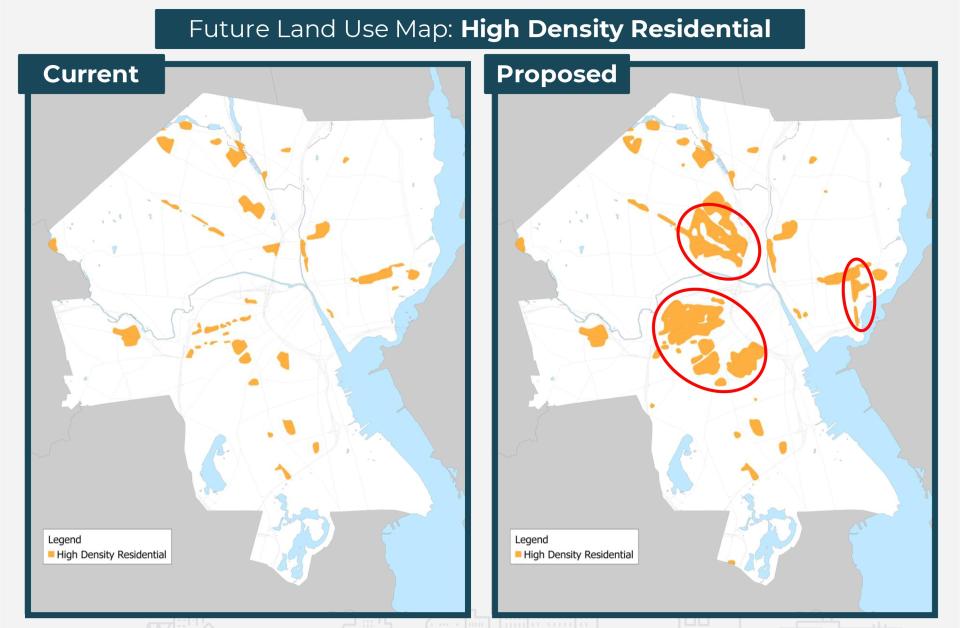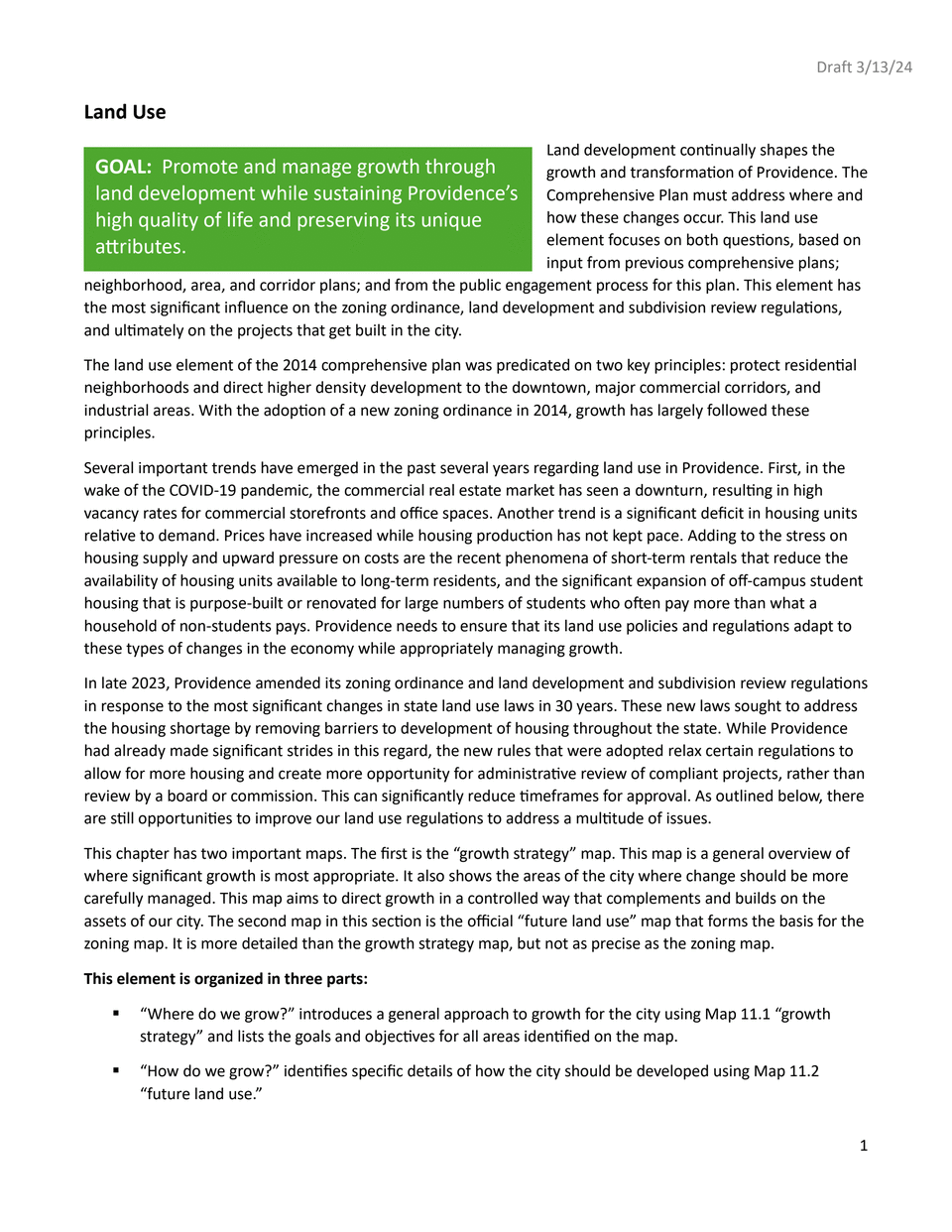Could triple-deckers rise again in Providence? How proposed zoning changes could bring them back.
PROVIDENCE − City planners have proposed to make every zone in the city that allows two-family dwellings also allow three-family dwellings, and to rezone certain areas that currently allow three dwellings to scale up to apartment buildings.
Under a draft land-use plan, part of the city's adoption of a new comprehensive plan, city planners propose folding the lowest-density commercial zoning district, C-1, into the medium-density zoning district, C-2.
The comprehensive plan is completed every 10 years.
"The fact is, that we need to find more opportunities to build housing," Deputy Planning Director Bob Azar said during a planning meeting Tuesday night. "Zoning and land use is not going to solve the housing crisis alone."
What is being proposed?
Turn all duplex zones into triplex zones and rename them "medium density residential."
Allow "small" apartment buildings in the new triplex zone through an as-yet-undetermined process.
Turn some triplex zones into denser R-4 zones, which allow for larger apartment buildings.
Turn the least-dense commercial zoning (C-1) into the next-higher density level, C-2.
New buildings in residential areas would be no taller than three stories except in R-4, where they could be four stories tall.

What is the R-4 zone, and why is it important?
Providence has five residential zones, four of which get their numbering from the number of units they allow by right:
R-1 for single-family houses
R-1A for single-family houses on big lots
R-2 for duplexes
R-3 for triplexes
R-4 for apartment buildings
The new R-4 zone would allow for dense residential developments by right, something that was not allowed until recently in residentially zoned areas.
In a 2022 planning document, the Department of Planning and Development described proposed changes to the R-4 district as allowing it to become "a true multifamily zoning district" but noting that any new R-4 zones would have to be created by the City Council.

Currently, the R-4 zone does not put a cap on the number of units in a building, something commissioners and planning staff have resisted following an initial proposal by Kevin Diamond and Dustin Dezube in the Mount Hope neighborhood for a 58-unit four-story apartment building composed of small units. They are principals in Providence Architecture and Building Company.
Diamond and Dezube have also proposed adding 59 units across three new buildings in the Federal Hill neighborhood, plans that require the City Council to approve the zone changes.
Developer Seth Zeren, with Armory Management Company, has proposed a 26-unit building next to a former nursing home along Parade Street, across from the Dexter Training Ground, that he turned into 12 market-rate apartments. At the time of the renovation, 12 units was the cap for the R-4 zone. The cap has since been lifted.
Where would three-family zones be changed into the denser R-4?
In an email, Azar wrote that the proposed change from three-family to the denser R-4 is for "specific areas called out as high-density residential on the future land use map."
Maps provided during a presentation on Tuesday night show three areas where the zoning would increase from triplexes to R-4: Upper South Providence/the West End/Federal Hill, Smith Hill/Downtown/Valley and Fox Point/Wayland. The map shows areas, but not entire neighborhoods, for rezoning. Most of the areas appear to be already zoned for triplexes.

How did we get here?
When the city adopted its first zoning code in 1923, much of it was already built. The next major change came in 1951, part of the wave of urban renewal that displaced ethnic minority communities, turned houses into parking lots and bulldozed neighborhoods to build freeways.
The 1950s urban renewal zoning code was meant to decrease density. The 1923 zoning rules allowed for "an awful lot of density." The 1951 zoning code introduced the city's current plan for three main residential zones, for single-family houses, duplexes and triplexes, Azar said.
How did we get here? Rhode Island's housing crisis is at a breaking point.
"Ever since probably the late '90s, we've been slowly kind of reversing that trend and undoing a lot of the things in those earlier zoning ordinances that speak to a city that, if you build it, according to those ordinances, it looks more like a suburb," Azar said.
In neighborhoods like Elmwood and Fox Point, they are zoned for duplexes but in reality, much of the housing is triple-deckers or denser, Azar said.
If you zone it, will they come to build new triple-deckers?
If the zone change doing away with the 1950s duplex zone goes forward and all those areas allow triple-deckers, does it matter?
Reporter Tom Mooney, in the Sunday, Feb. 28 Providence Journal, explained why builders quit building triple-deckers after their central role in quickly expanding Rhode Island's housing stock in the early 20th century as immigrants arrived in large numbers.
As Mooney reported, three-unit buildings are now considered commercial properties under the state's building code and require expensive sprinkler systems, fire alarm systems and two staircases.
As Providence Director of Inspections and Standards James Moore put it, the projects no longer "pencil out" as cost-effective.
Legislation proposed by Neighbors Welcome! Rhode Island, a pro-housing group, would shift the building code for three- to six-unit buildings from commercial to residential, doing away with much of the prohibitively expensive building requirements.
New housing proposal sparks fiery debate Stairway to affordability or shortcut to danger?
Zeren, who is both a developer and director of the organization, said the bill could make triple-deckers feasible again, but the city would also need to expand three-family zoning.
"Unless the land use changes, you can't build them," he said.
Row houses seen as another way to expand three-family buildings
Triple-deckers are not the only form of triplex that can be built, as row houses present a viable option.
'More gentle density'
Christian Roselund, an organizer/founder with Providence Urbanist Network, said in an interview that the proposed plan would create "gentle density" in the city.
"It's exactly what we need," he said.
Page 1 of 24.03.13-Comp-Plan-Land-Use-Chapter

Contributed to DocumentCloud by Wheeler Cowperthwaite (The Providence Journal) • View document or read text
While Roselund and the other members of his group, many of whom testified at the Tuesday meeting, think the new plan is a huge step forward, they want to see more areas near high-frequency bus routes slated for denser development.
The other place the map should be denser is the "growth corridors" that should be zoned commercial, which allows mixed-use buildings – residential and commercial.
"There's no reason to freeze commercial areas in the city in time," he said.
Thanks to our subscribers, who help make this coverage possible. If you are not a subscriber, please consider supporting quality local journalism with a Providence Journal subscription. Here's our latest offer.
Reach reporter Wheeler Cowperthwaite at wcowperthwaite@providencejournal.com or follow him on Twitter @WheelerReporter.
This article originally appeared on The Providence Journal: Providence comprehensive plan proposes upzoning duplexes to triplexes

